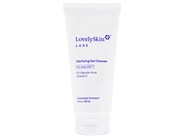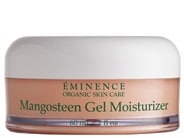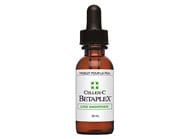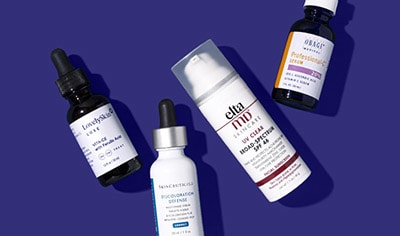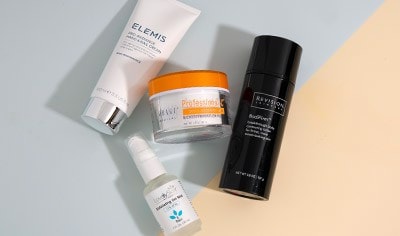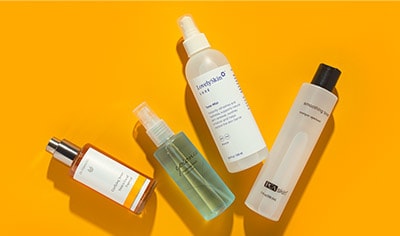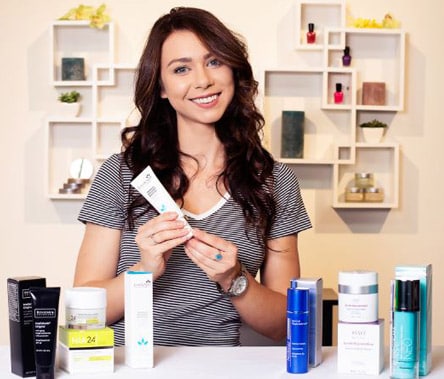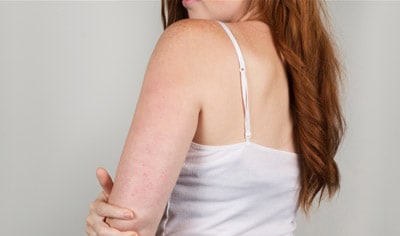Called AHAs for short, alpha hydroxy acids have a long list of skin benefits. Thanks to their exfoliating power, they can smooth wrinkles even skin tone, fade the look of dark spots and reduce acne. It’s no wonder you find AHAs in all sorts of skin care products, from cleansers to toners to serums. In higher concentrations, AHAs are the active ingredients that give professional-grade peels their intense exfoliating power. However, not all AHAs are suited for all skin types, so it can take some research to find the right AHA products for your skin. So, we’re here to help with that! Let’s dig into some popular questions about AHA skin care, including:
AHA stands for alpha hydroxy acid. AHA actually isn’t one thing, but rather a group of acids that are found naturally in a variety of foods. So, you might be wondering what does AHA do for skin when it’s used in skin care? “What all AHAs have in common is their ability to exfoliate,” says board-certified dermatologist and LovelySkin CEO Dr. Joel Schlessinger. “They help eliminate the dead skin cells on the surface of your skin to make way for the fresh, healthy-looking skin below.”
Alpha Hydroxy Acids List
Here’s a list of the top five AHAs that you’ll most commonly find used in your skincare products:
1. Glycolic Acid
Glycolic acid is derived from sugar cane and is considered the strongest AHA commonly used in skin care. It works to exfoliate the outermost layer of your skin, and because of the small size of its molecules, it also penetrates the skin deeply to help stimulate collagen production.
2. Lactic Acid
Lactic acid is milder than glycolic acid and also helps hydrate the skin. Because its molecules are larger than glycolic acid, it doesn’t penetrate the skin as deeply. This makes it a smart option for sensitive skin types who might find glycolic acid irritating. As you might guess from the name, lactic acid is found naturally in milk.
3. Malic Acid
Malic acid is known for its skin-brightening abilities. With a molecule size larger than that of lactic acid, it’s also gentler on the skin. Malic acid is naturally occurring in apples.
4. Mandelic Acid
Mandelic acid is similar to lactic and malic acids in that its larger particle size makes it potentially less irritating. However unlike any other AHAs mentioned here, mandelic acid has antibacterial properties.
5. Citric Acid
Citric acid is the mildest, least acidic of the AHAs mentioned here. Found naturally in citrus fruits such as orange, lemon, lime and grapefruit, citric acid is also an antioxidant, meaning it protects skin against aging and environmental damage.
What are the best AHA products for my skin?
Try: a glycolic and lactic acid peel

OBAGI Clinical Blue Brilliance Triple Acid Peel provide professional-grade exfoliation from the comfort of your own home. This alpha hydroxy acid product actually contains two AHA (glycolic and lactic acids) and one beta hydroxy acid (salicylic acid). All three ingredients provide potent exfoliating powers to help unclog pores and smooth dull, rough skin. In a user study, 91% of participants who used this peel said their skin felt smoother after 8 weeks.
Try: a lactic acid moisturizer

The mild strength and moisturizing properties of lactic acid make it a fantastic choice for those with dry skin. For much-needed hydration and gentle exfoliation, try Eminence Mangosteen Gel Moisturizer, which not only contains lactic acid but also mangosteen for antioxidant protection and red clover flower extract to refine pores. You can easily customize the application too. For lighter hydration, mix this moisturizer with a few drops of water. For more intense moisturizing, apply a thicker layer over any dry or flaky spots.
Try: a cleanser with glycolic acid and afaLUXE
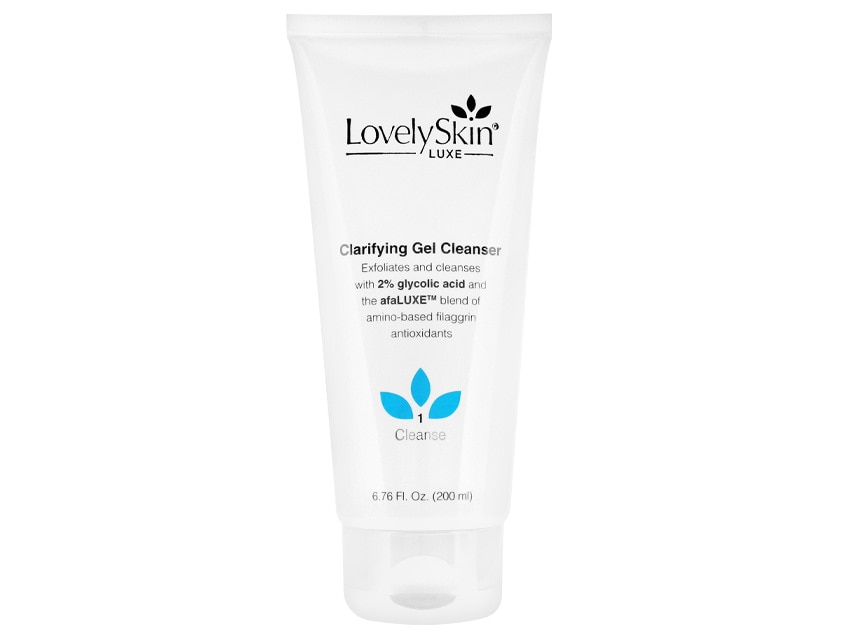
Glycolic acid helps exfoliate the surface of your skin, sweeping away the dead skin cells that become trapped inside pores and can lead to acne. It fights acne especially well when combined with salicylic acid, a beta hydroxy acid (BHA) that helps loosen the clogs deep inside pores. LovelySkin LUXE Clarifying Gel Cleanser features both glycolic acid and salicylic acid plus afaLUXE, a blend of antioxidants, Dead Sea minerals and vitamin C. Dr. Schlessinger says, “afaLUXE is a collection of low pH substances that are amino-based and mimic the natural moisture factor found in skin. It isn’t technically an AHA and it's actually derived from the sugarcane bud as opposed to the sugarcane stalk like glycolic acid. I think of it as a gentler cousin to AHA because it behaves like an AHA but with much less irritation.” Another fantastic product featuring afaLUXE is the LovelySkin LUXE Exfoliating Gel Mild, a daily face treatment that helps encourage the natural exfoliation process, support collagen production and minimize the appearance of large pores.
Try: a mandelic acid and lactic acid toner

Those with sensitive skin will want to stick to milder AHAs such as lactic acid and mandelic acid. StriVectin Advanced Glow Tri-Phase Daily Glow Toner contains both AHAs, which is specially formulated to help smooth and brighten skin without causing irritation. This daily toner also contains hyaluronic acid to help hydrate skin, as well as soothing ingredients, such as calendula and aloe leaf.
Try: an anti-aging serum with malic, glycolic and lactic acids
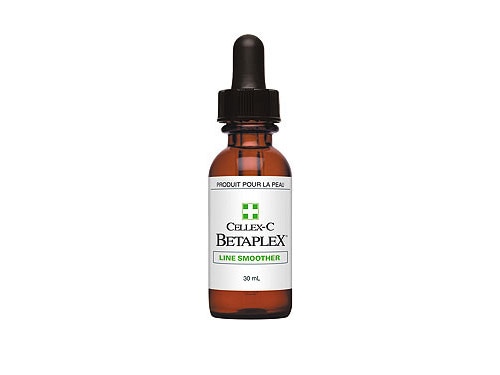
For mature skin that’s showing signs of aging, a potent treatment that blends multiple AHAs for maximum effect is key. Cellex-C Betaplex Line Smoother is an oil-free anti-aging serum that combines glycolic, lactic and malic acids to spur cell turnover and reduce the appearance of wrinkles and fine lines. It also contains hyaluronic acid, which draws moisture into the skin, helping it appear plumper and smoother.
Using AHA skin care can increase your skin’s sensitivity to the sun, so it’s important to wear sunscreen religiously when using them. Check out our picks for the best sunscreens for oily, dry, acne-prone skin and rosacea.








